Abstract
Differences in the ability to withstand freeze-drying were demonstrated among strains of Salmonella typhimurium. On the average, the number of viable cells in freeze-dried cultures stored at 5 C for 12 to 18 months was approximately one half as large as that found 24 hr after freeze-drying. The viability in samples stored at higher temperatures declined rapidly and was correlated with the dryness of the sample. The virulence for mice of three strains of S. typhimurium did not change appreciably when samples were kept for 1 or 2 years as freeze-dried samples stored at 5 C, or as agar cultures stored at 5 C or at room temperature.
Full text
PDF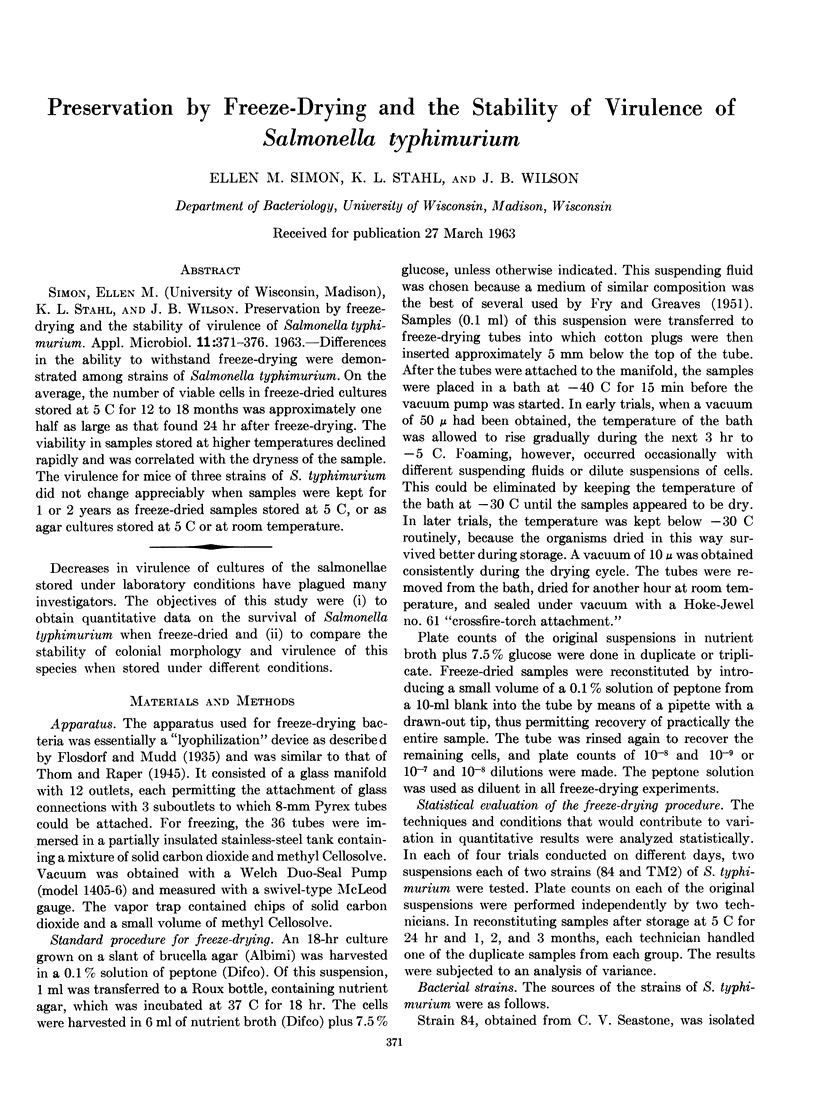
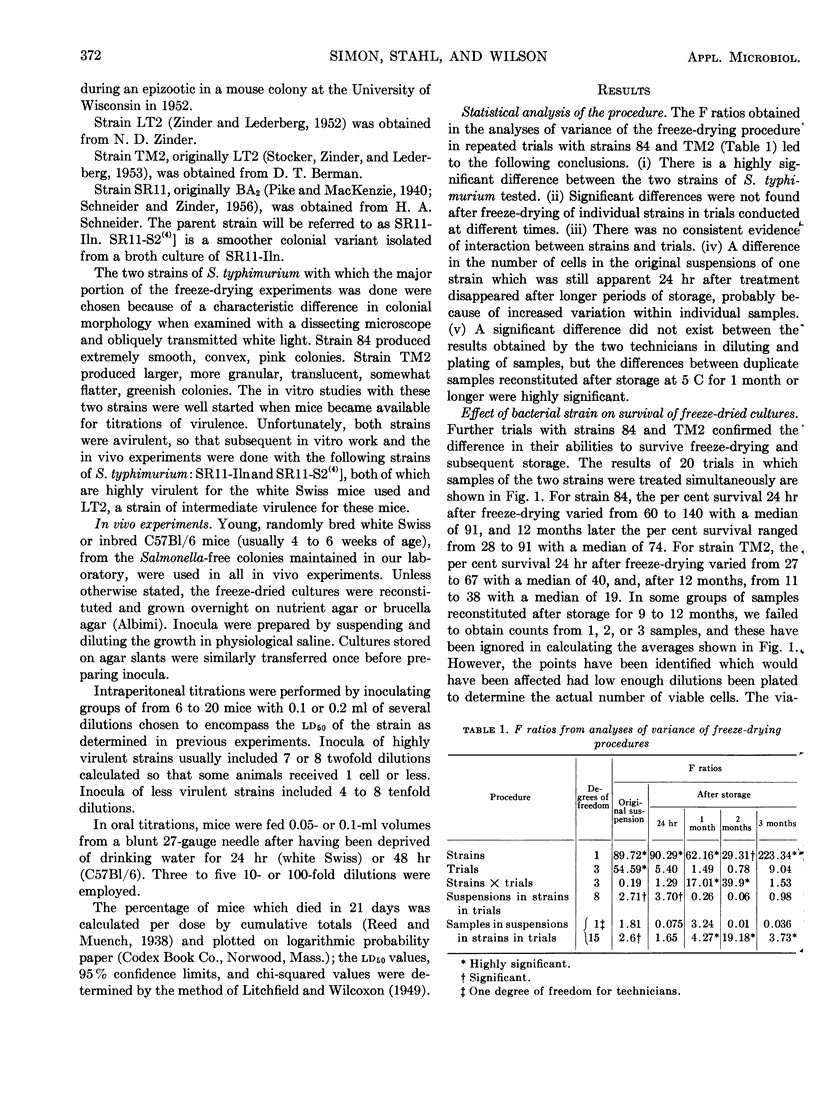
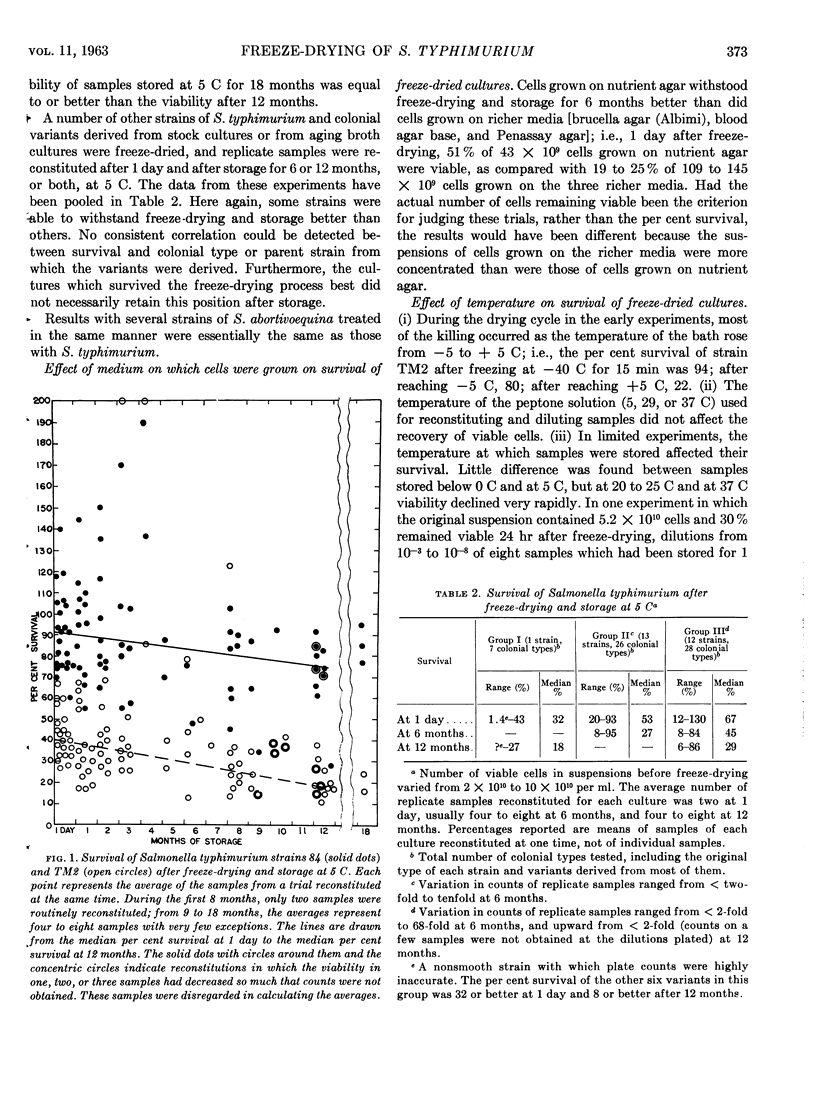
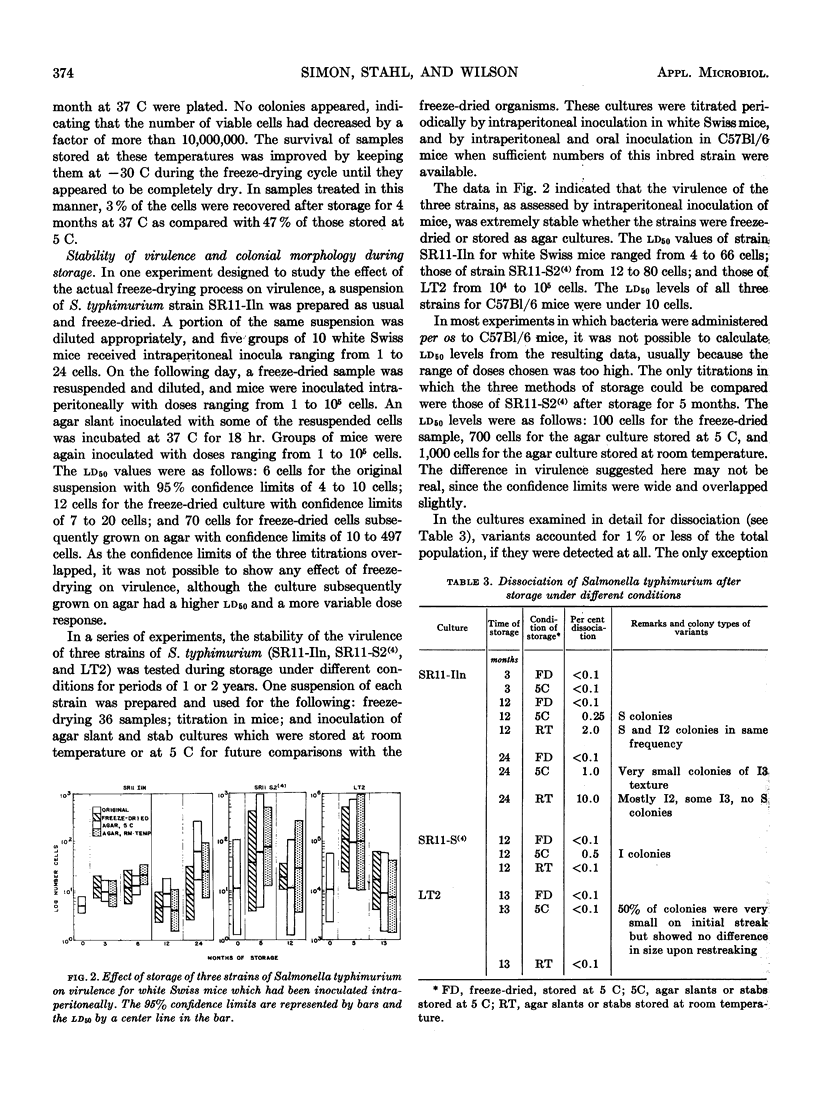
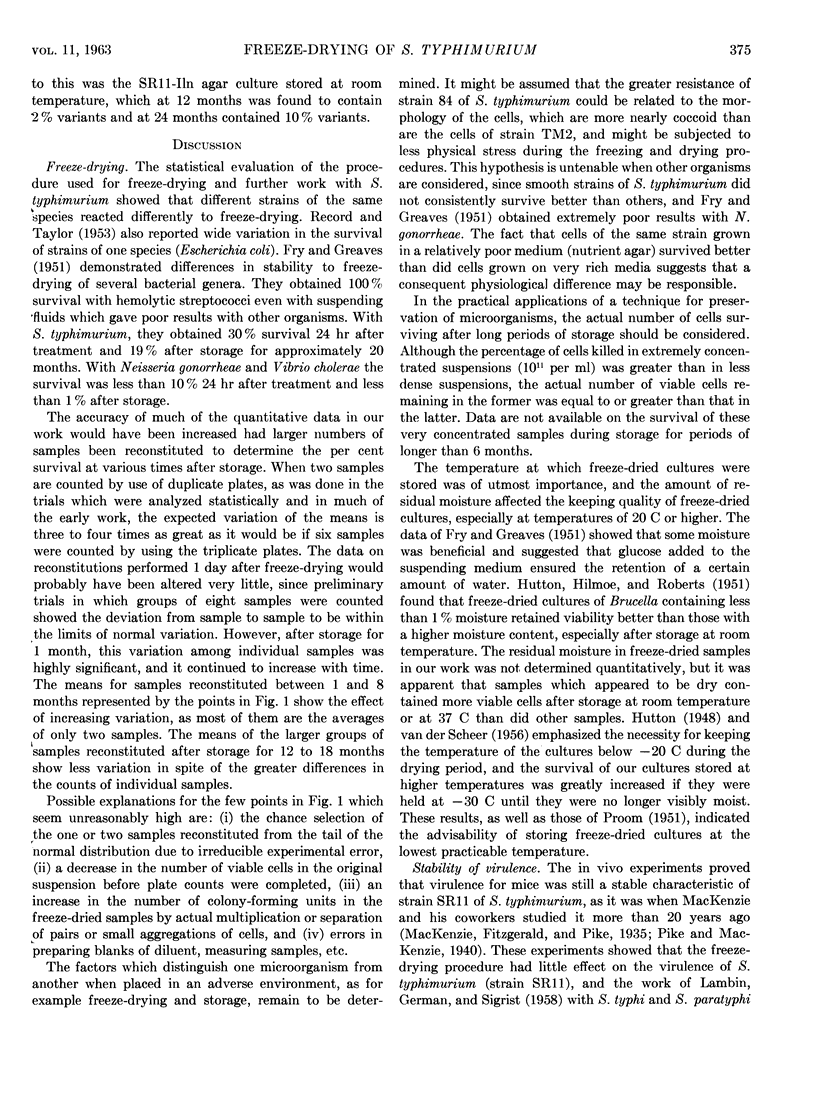
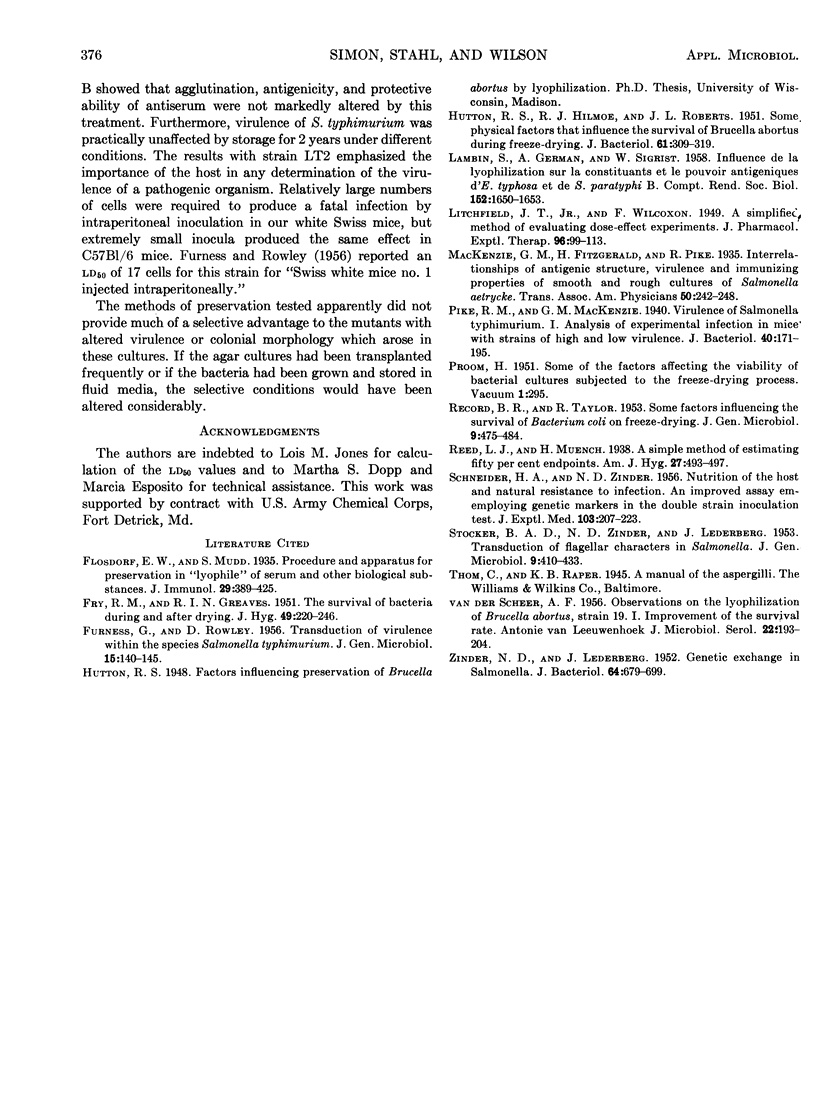
Images in this article
Selected References
These references are in PubMed. This may not be the complete list of references from this article.
- FRY R. M., GREAVES R. I. N. The survival of bacteria during and after drying. J Hyg (Lond) 1951 Jun-Sep;49(2-3):220–246. doi: 10.1017/s0022172400044120. [DOI] [PMC free article] [PubMed] [Google Scholar]
- FURNESS G., ROWLEY D. Transduction of virulence within the species Salmonella typhimurium. J Gen Microbiol. 1956 Aug;15(1):140–145. doi: 10.1099/00221287-15-1-140. [DOI] [PubMed] [Google Scholar]
- HUTTON R. S., HILMOE R. J., ROBERTS J. L. Some physical factors that influence the survival of Brucella abortus during freeze-drying. J Bacteriol. 1951 Mar;61(3):309–319. doi: 10.1128/jb.61.3.309-319.1951. [DOI] [PMC free article] [PubMed] [Google Scholar]
- LAMBIN S., GERMAN A., SIGRIST W. Influence de la lyophilisation sur les constituants et le po voir antigéniques d'E. typhosa et de S. paratyphi B. C R Seances Soc Biol Fil. 1958;152(12):1650–1653. [PubMed] [Google Scholar]
- Pike R. M., Mackenzie G. M. Virulence of Salmonella typhimurium: I. Analysis of Experimental Infection in Mice with Strains of High and Low Virulence. J Bacteriol. 1940 Aug;40(2):171–195. doi: 10.1128/jb.40.2.171-195.1940. [DOI] [PMC free article] [PubMed] [Google Scholar]
- RECORD B. R., TAYLOR R. Some factors influencing the survival of Bacterium coli on freeze-drying. J Gen Microbiol. 1953 Dec;9(3):475–484. doi: 10.1099/00221287-9-3-475. [DOI] [PubMed] [Google Scholar]
- SCHNEIDER H. A., ZINDER N. D. Nutrition of the host and natural resistance to infection. V. An improved assay employing genetic markers in the double strain inoculation test. J Exp Med. 1956 Feb 1;103(2):207–223. doi: 10.1084/jem.103.2.207. [DOI] [PMC free article] [PubMed] [Google Scholar]
- STOCKER B. A. Transduction of flagellar characters in Salmonella. J Gen Microbiol. 1953 Dec;9(3):410–433. doi: 10.1099/00221287-9-3-410. [DOI] [PubMed] [Google Scholar]
- VAN DER SCHEER A. F. Observations on the lyophilization of Brucella abortus, strain 19. I. Improvement of the survival rate. Antonie Van Leeuwenhoek. 1956;22(2):193–204. doi: 10.1007/BF02538327. [DOI] [PubMed] [Google Scholar]
- ZINDER N. D., LEDERBERG J. Genetic exchange in Salmonella. J Bacteriol. 1952 Nov;64(5):679–699. doi: 10.1128/jb.64.5.679-699.1952. [DOI] [PMC free article] [PubMed] [Google Scholar]



